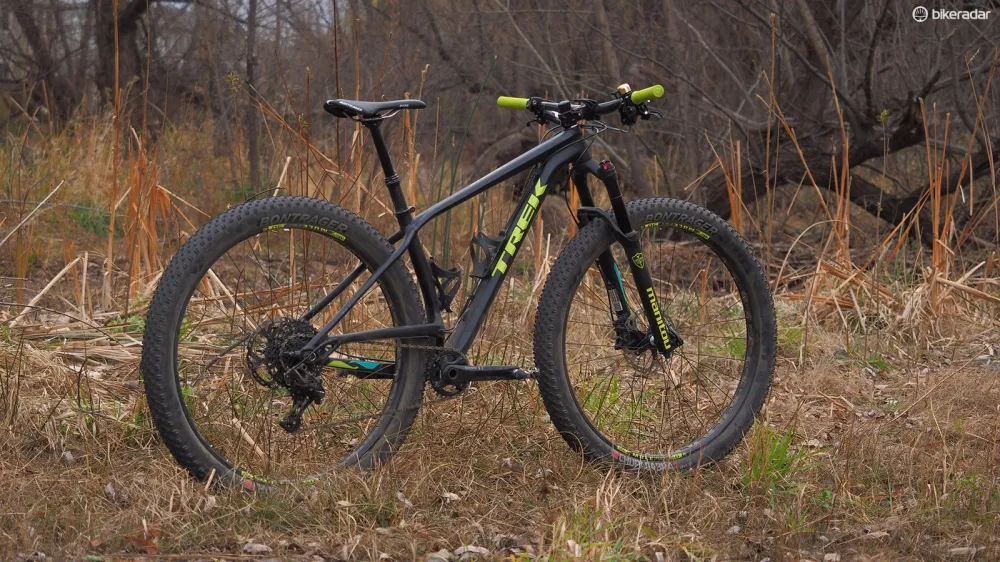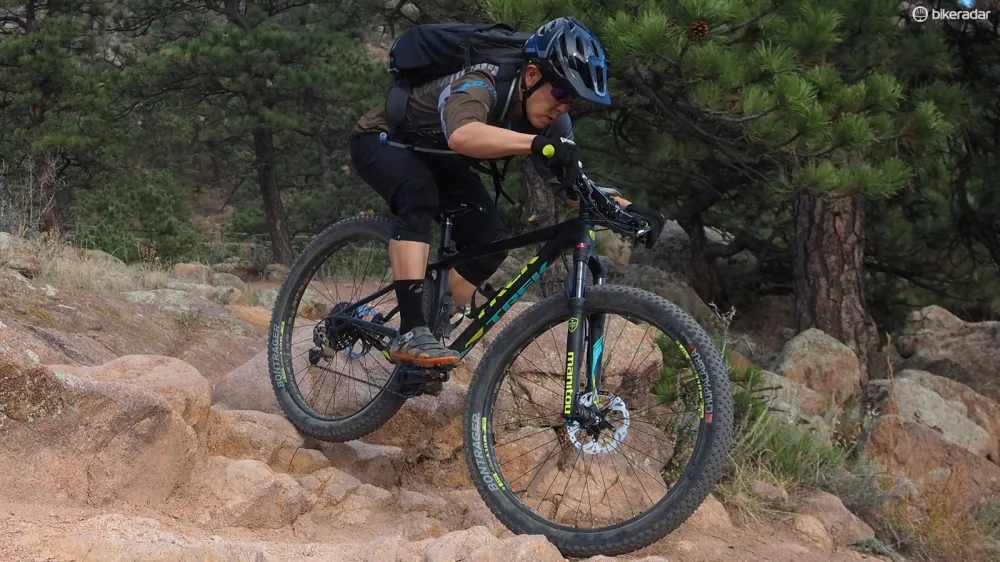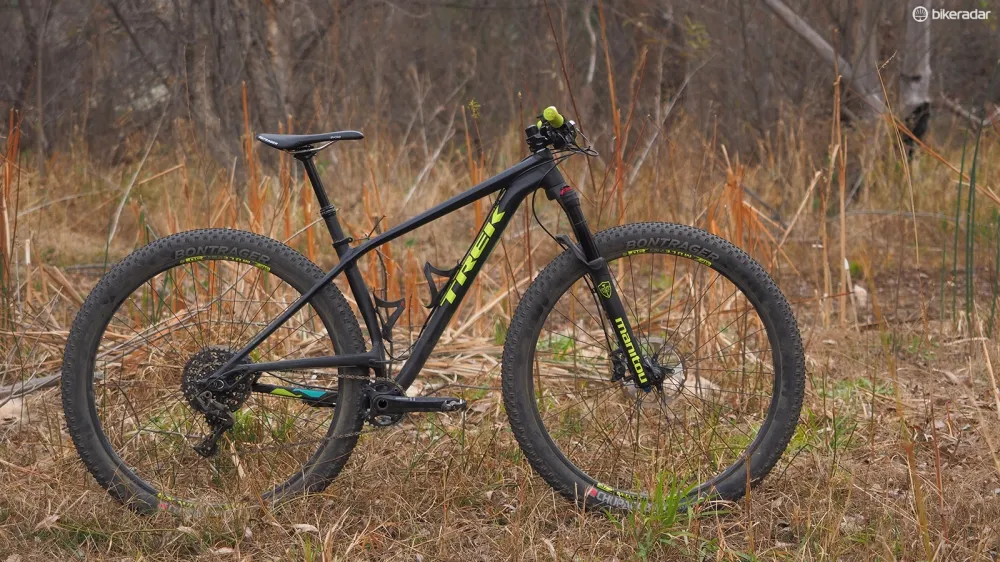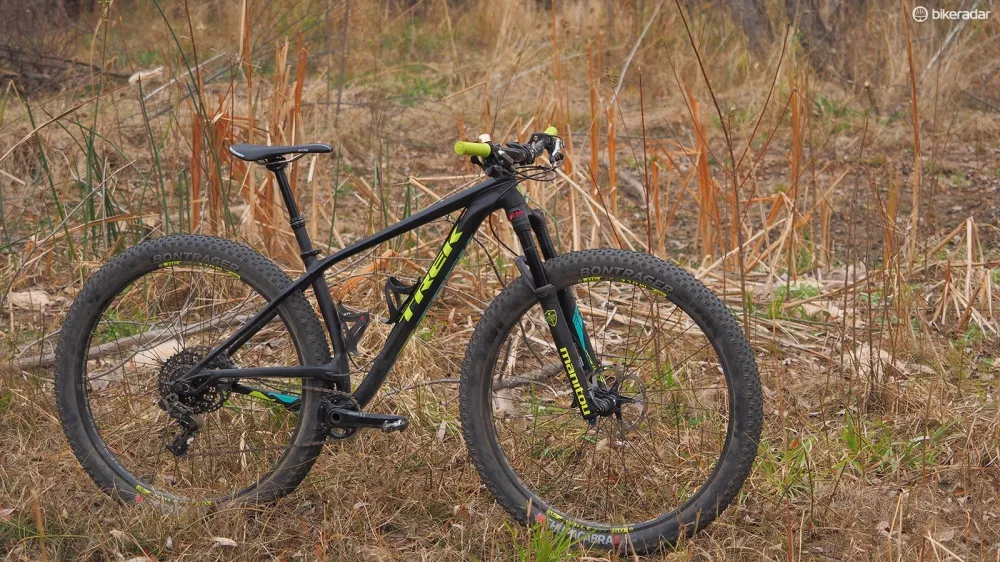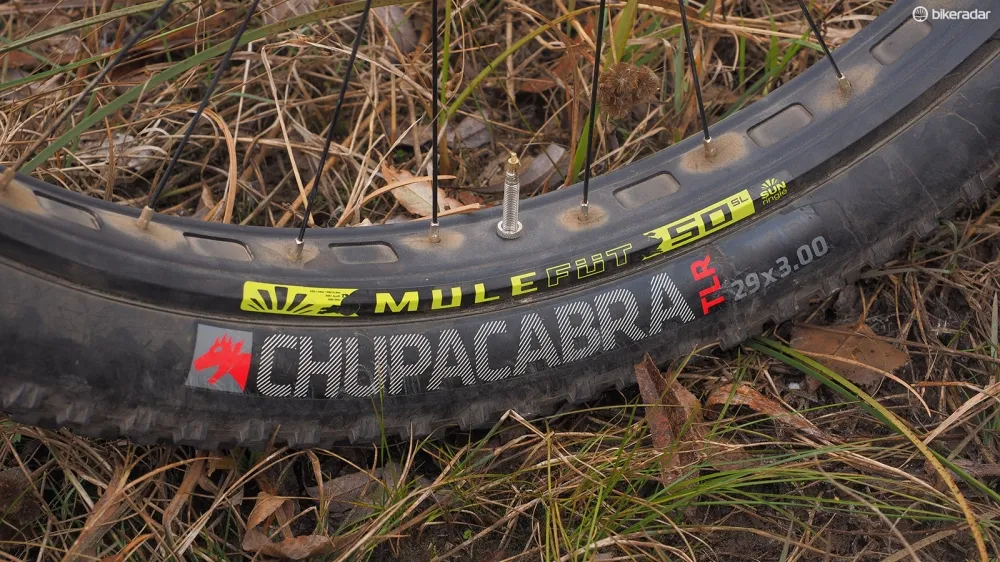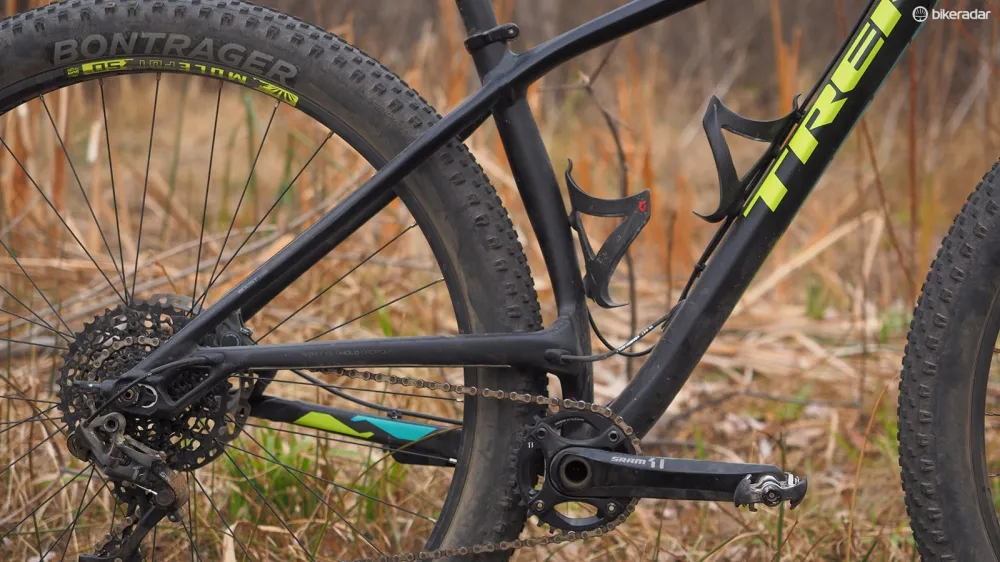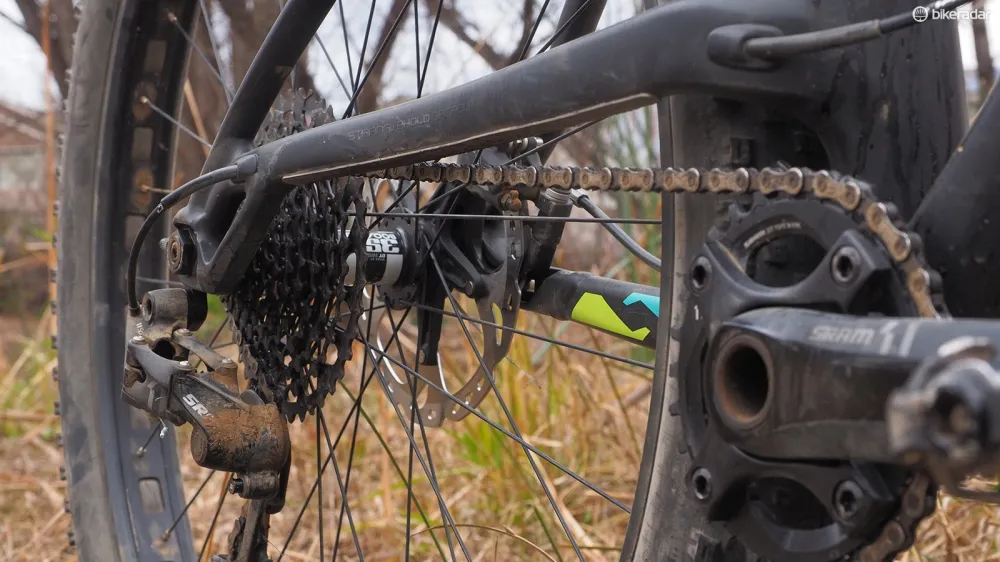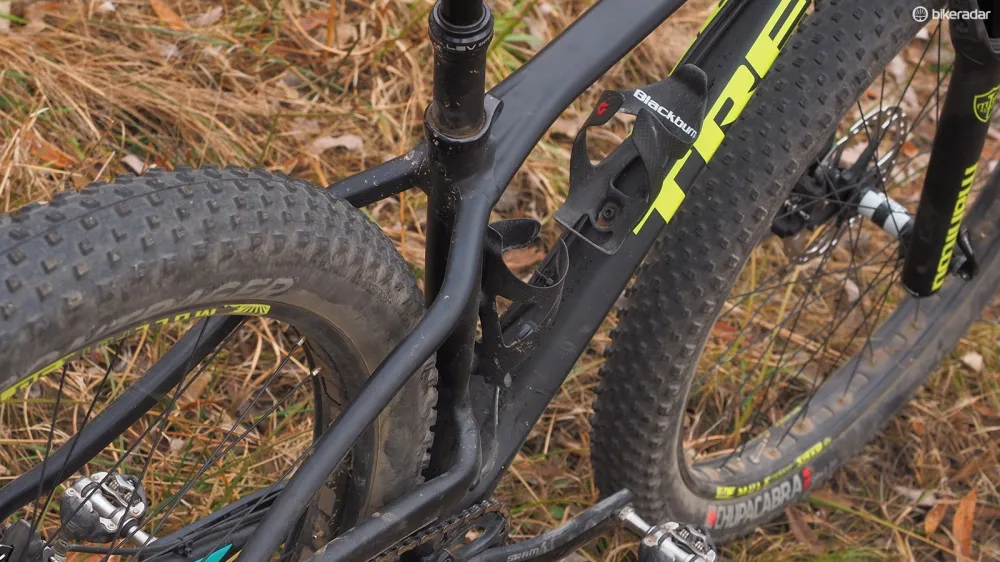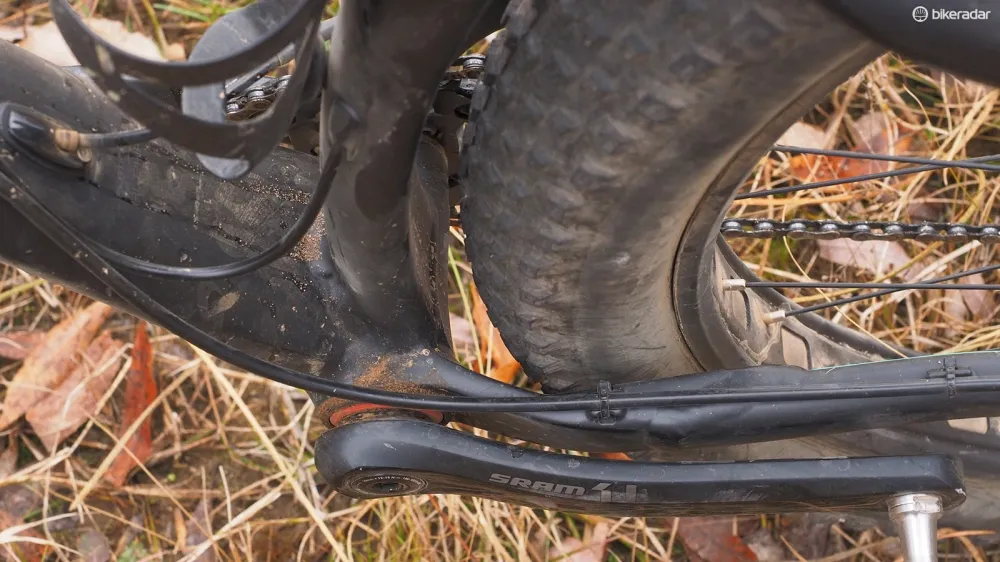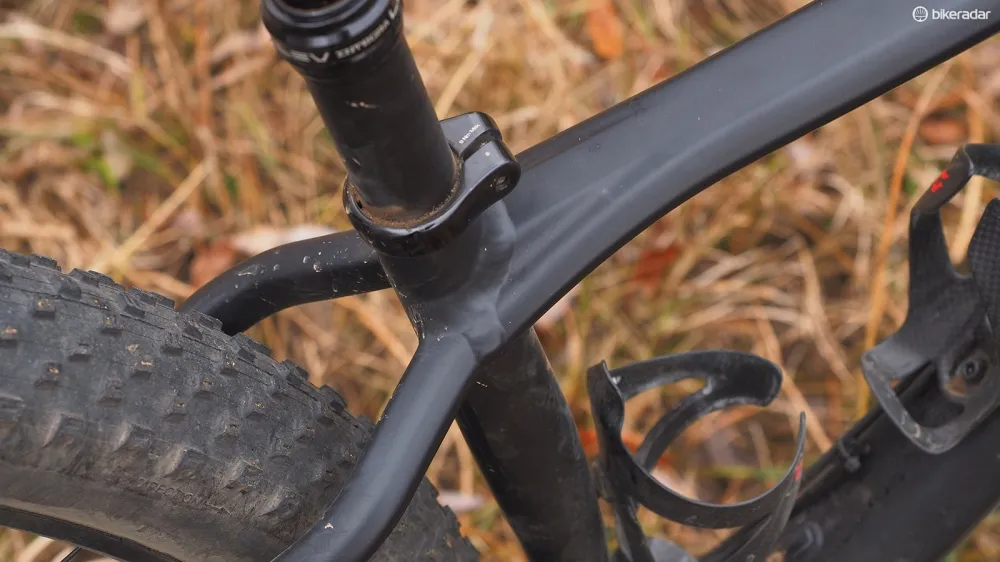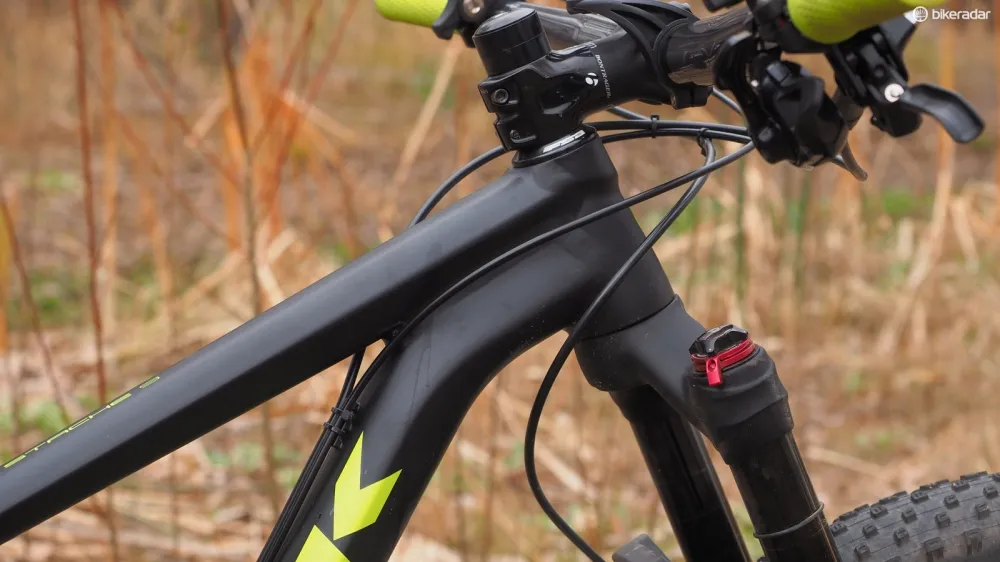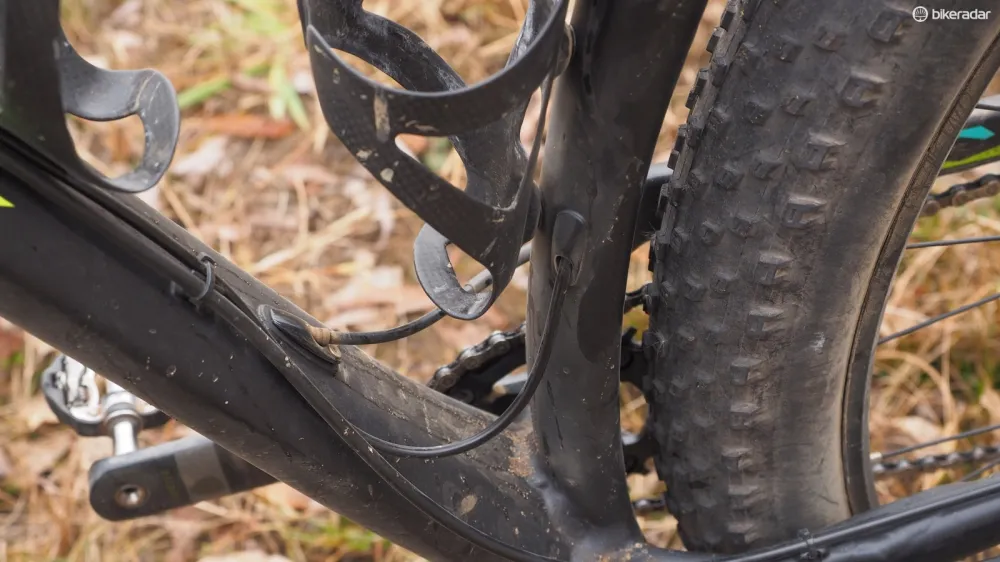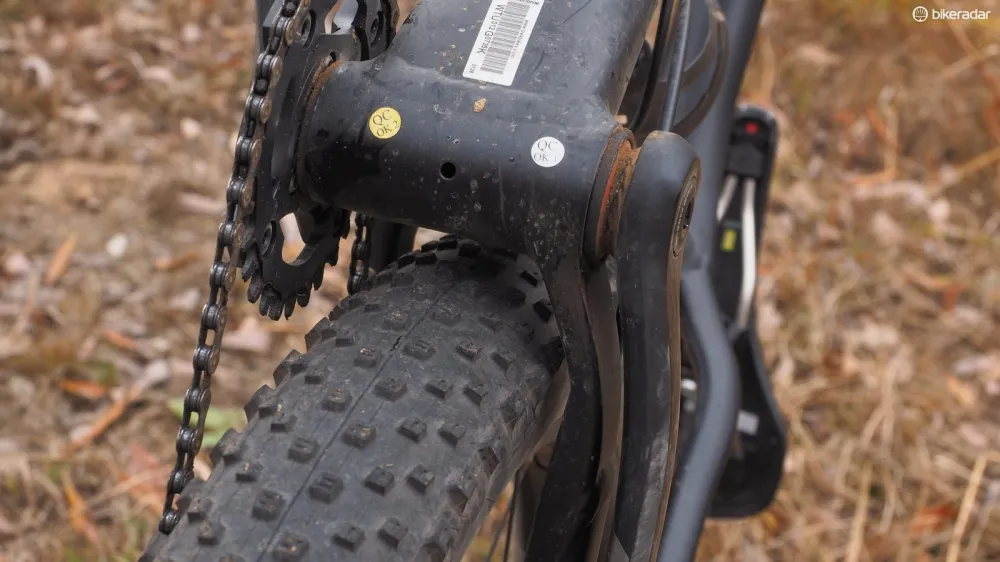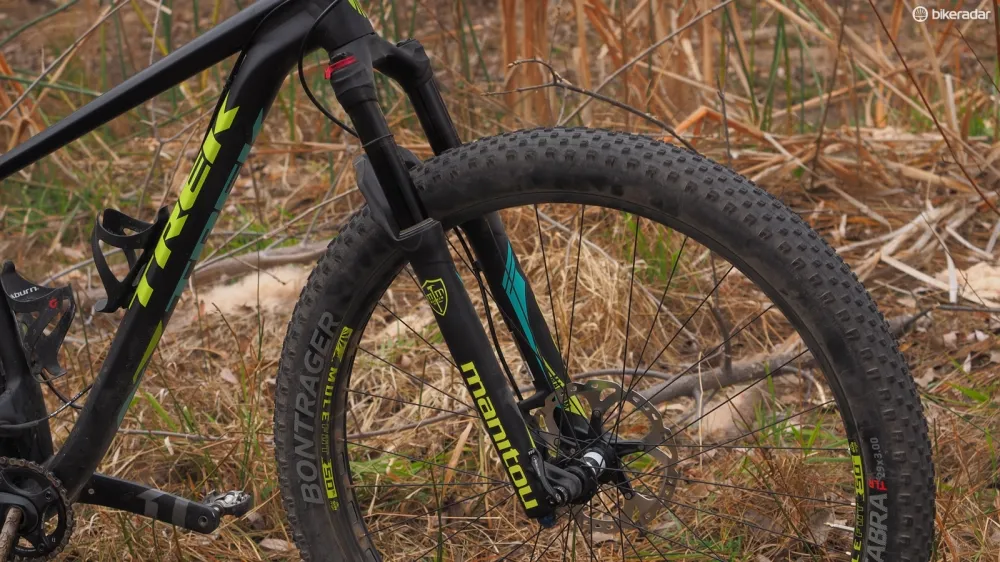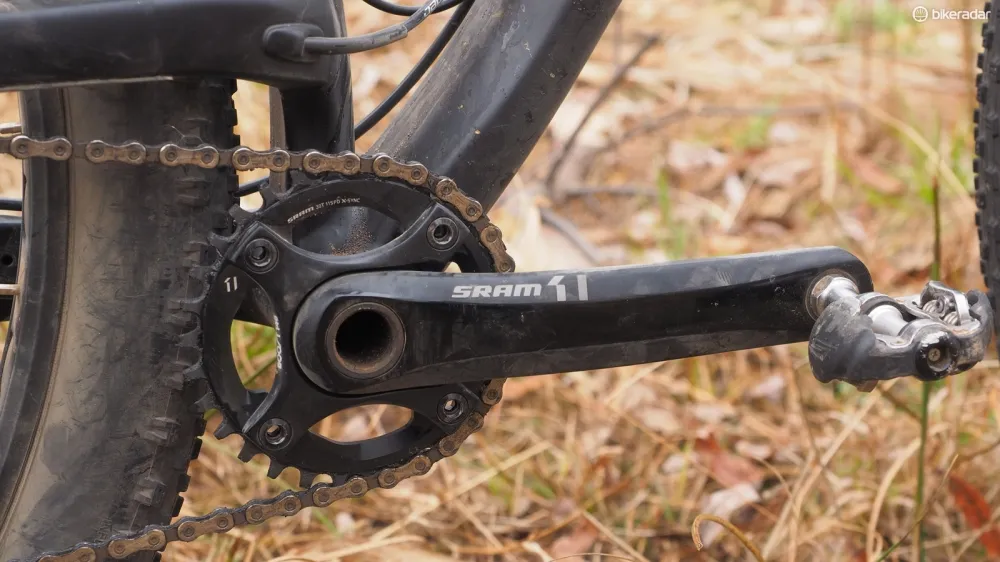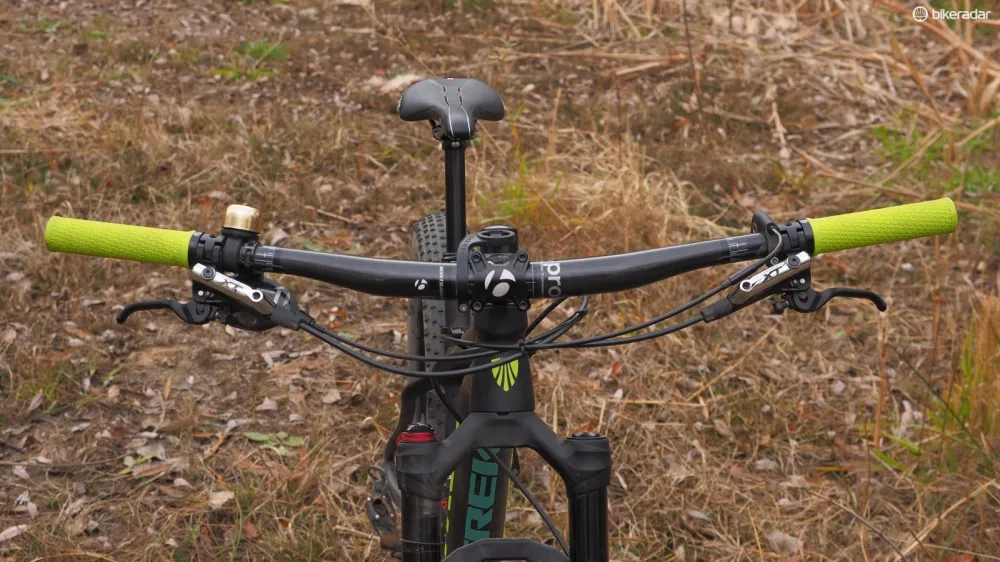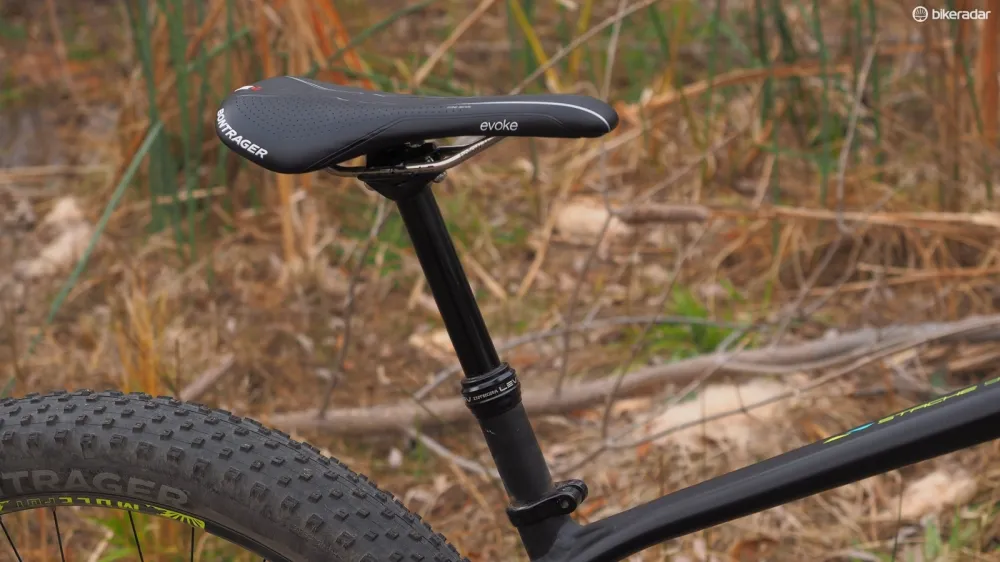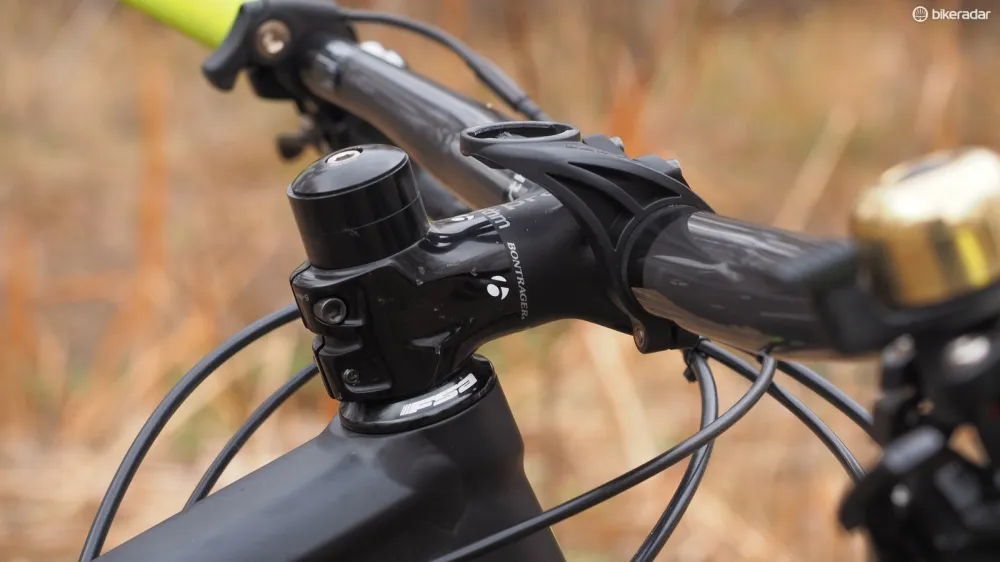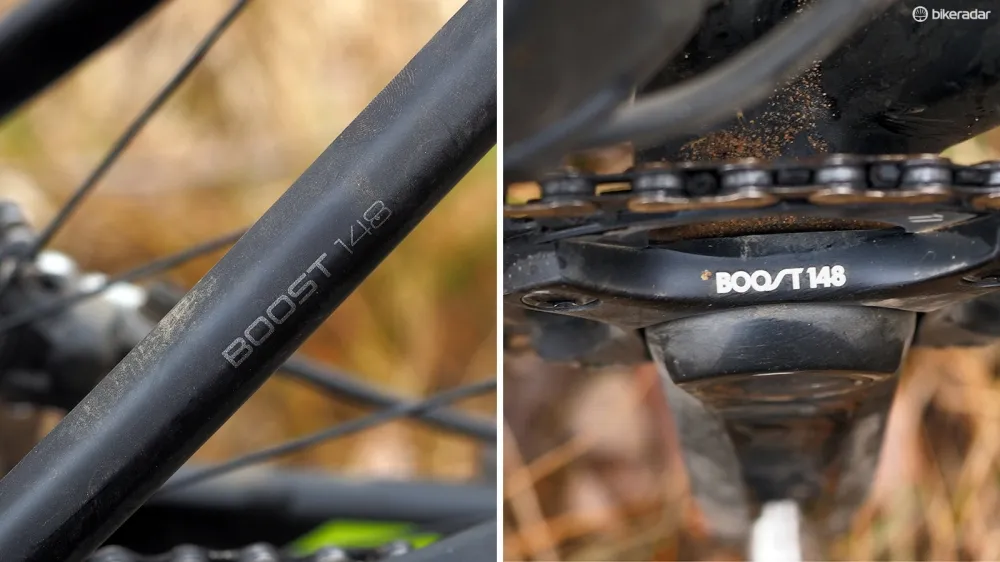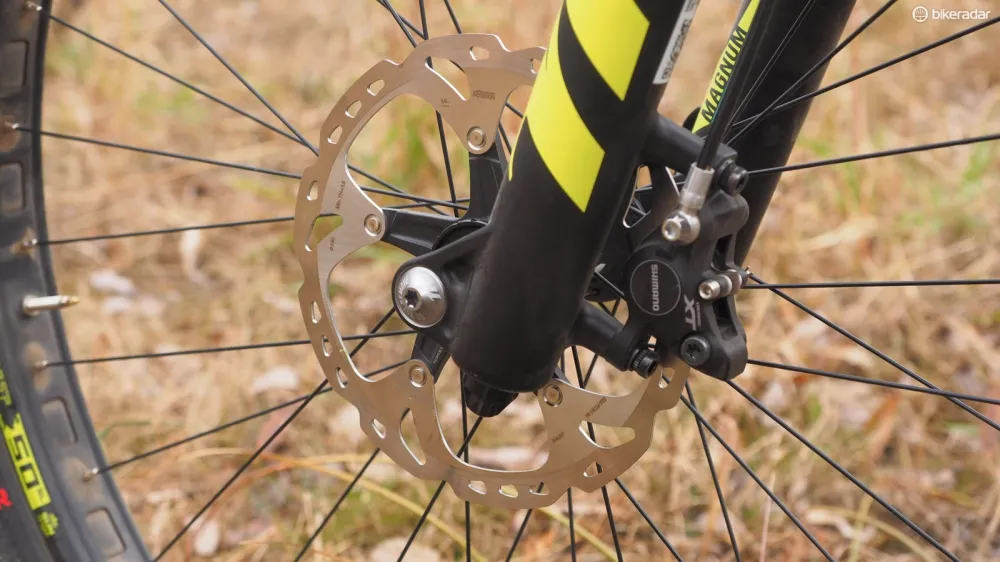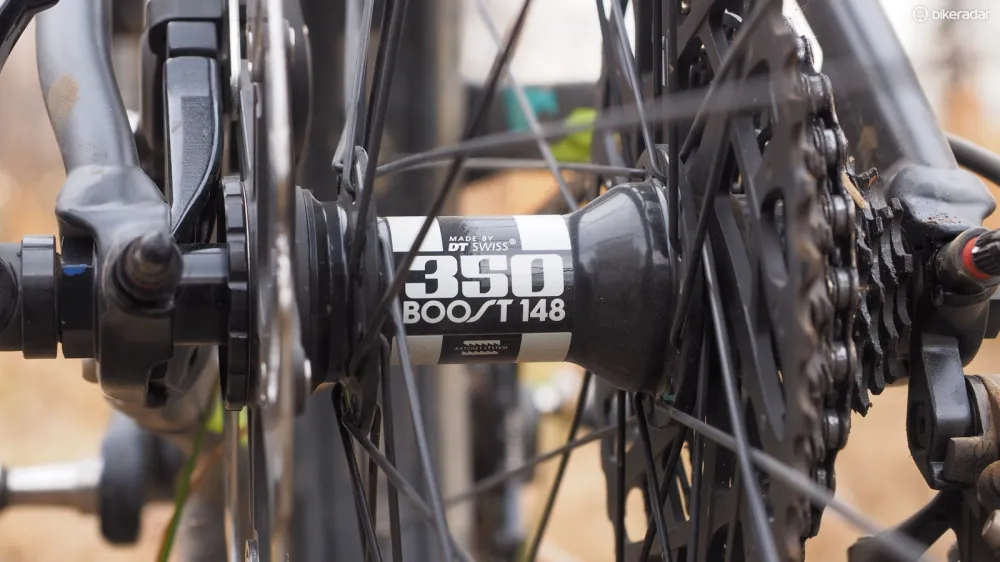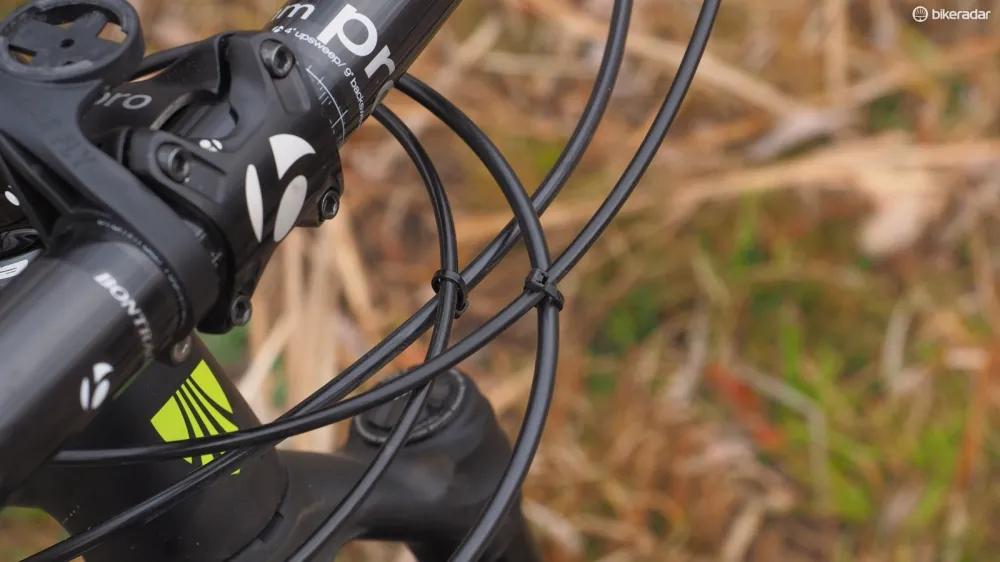‘Plus-sized’ mountain bikes are just barely breaking ground but Trek is already bucking the emerging trend with its new Stache 9 hardtail, slapping 3in-wide tyres on 29in wheels instead of the smaller 27.5in ones.
Cast aside your images of a slow and cumbersome machine though – the wheels and tyres may be huge but the Stache 9 is remarkably nimble and far more entertaining than you’d expect on paper. If your main goal is just having fun when you hit the trails, the Stache 9 just might be the bike you’ve been waiting for.
null
This ain’t no lumbering big-wheeler
The Stache 9 may wear Sub-Ringlé rims that are the same diameter as on a standard 29er but they’re nearly twice as wide and end up about two inches taller in total when you account for the matching 3in-wide Bontrager Chupacabra tyres. Given such a massive disparity, then, it’s no surprise that those huge feet large define the Stache 9’s personality on the trail.
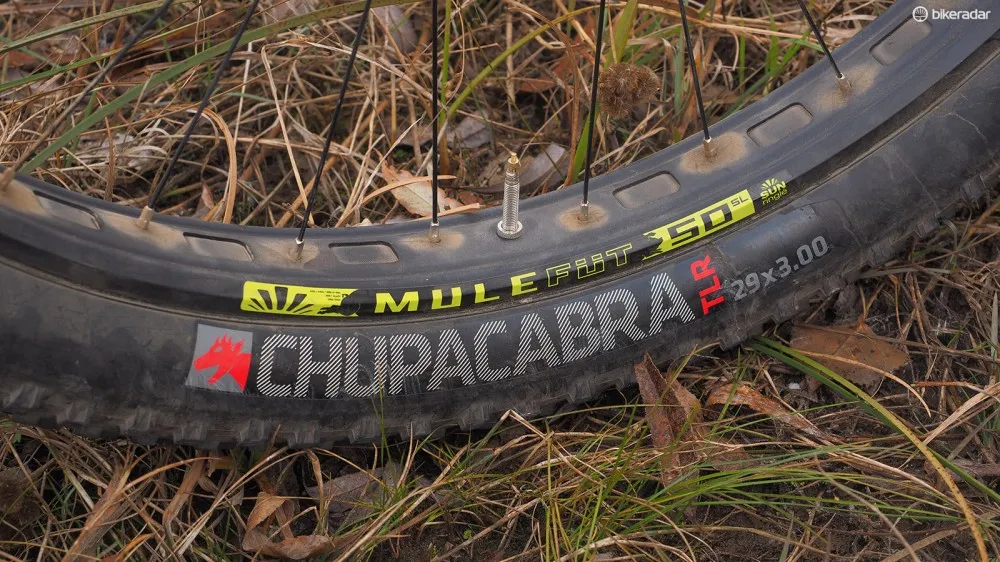
The 45mm-wide rims and 3in-wide tyres make for a huge footprint on the ground
When you combine that bigger overall diameter with the huge increase in air volume and lower operating pressures – roughly 12psi for this 70kg (154lb) test rider – what you get is more akin to a hovercraft than a mountain bike in terms of isolation. With so much pillowy goodness underneath you, the Stache 9 positively floats over small-to-medium rocks and roots without so much as a hiccup to disrupt your flow.
Those bigger tyres also put more rubber – and more knobs – on the ground, and there’s a corresponding boost in all-around traction, depending on the ground conditions (more on that later). The Stache is impressively adept at technical climbing that might otherwise stifle a bike with less grip but cornering traction is especially good, particularly with the excellent 110mm-travel Manitou Magnum Pro suspension fork doing a great job of keeping the front tire firmly planted on the ground.

Manitou is back! The Magnum Pro fork is fantastic
The lack of similar movement out back (plus the tyres’ minimal tread) makes the back end occasionally prone to kicking out but all things considered, it’s generally quite controllable and yields heaps of tail-out hooliganism.
Those big meats are just one of the two characteristics that define the Stache 9’s personality, though; the other is its rather unique frame geometry.
Despite having wheels that are two inches bigger in diameter, the Stache 9’s radically shaped frame yields a hyper-compact and adjustable rear end. In its shortest setting, the chainstays measure a miniscule 405mm from bottom bracket to rear axle – a full 3cm shorter than a full-suspension Trek Fuel EX 29er trail bike with the same decrease in wheelbase.

The rear end is ridiculously short and makes for correspondingly ridiculous manoeuvrability
That stubby overall length makes the Stache 9 surprisingly manoeuvrable in tight quarters and unlike with most full-blown fat bikes, at no time does anything feel weird through the bars. It’s a piece of cake to flick the bike from corner to corner and even though the balance point is higher up off the ground, that ultra-short rear end still makes it far easier to loft the front end for bunnyhops and manuals than you might think.
Despite that agility, the Stache 9 is still confidently stable at warp speed. The front end is reasonably long, the head tube angle usefully slack, and the bottom bracket is quite low – and let’s not forget about the additional stabilising effect of all that rotational inertia.
Overall, the one word that best describes the Stache 9 is ‘fun’. Remember that friend you had in college? The big dude who dwarfed the rest of you in height and weight but could still keep up and was always the life of the party? That’s pretty much the Stache 9 in a nutshell.
You can’t escape physics
The Stache 9 is all about momentum. Between the terrain-flattening ability of the bigger and higher-volume wheel-and-tyre package and the extra cornering traction, you basically have to slow down a lot less than usual but you still have to get all that mass rolling initially. The bike isn’t especially hefty as far as trail bikes go with an actual static weight of 12.26kg (27.03lb, 17.5in size, tubeless, without pedals) but its substantial rotational weight can make it feel much heavier.
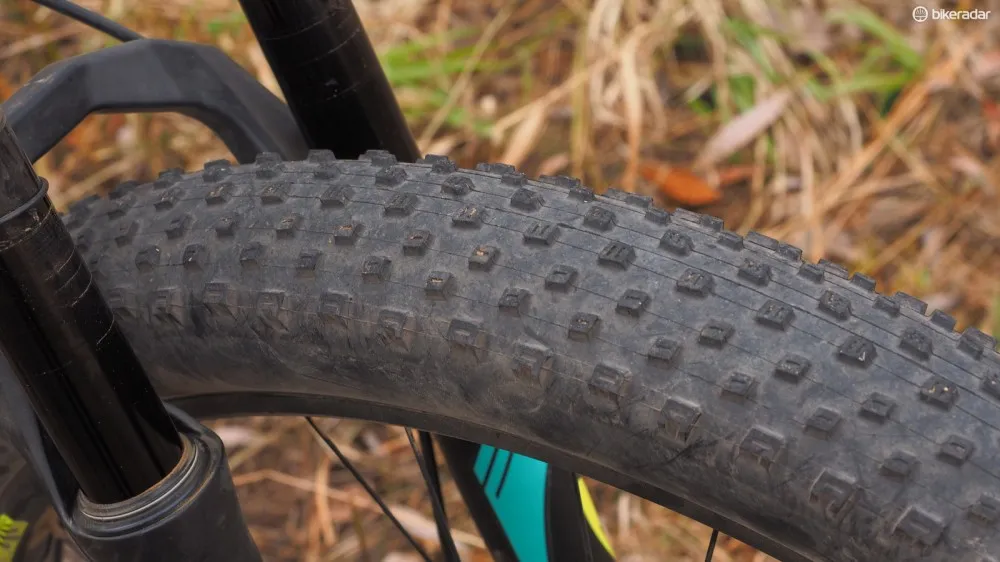
The Bontrager Chupacabra tires roll quickly but there's no escaping their substantial weight and inertia
Sun-Ringlé says each rim weighs 655g, the actual weight of the tires is nearly 900g apiece, and each tube is upwards of 400g (although thankfully, it’s easy to convert to tubeless). That’s about 800g of extra weight as compared to a typical 27.5in trail bike setup but it feels like much more when you consider the exponentially amplified rotational inertia effects of the Stache 9’s larger-diameter wheels.
Steady-state climbing at moderate speeds isn’t so bad as a result but it’s impossible not to notice the extra effort required to extract quick surges in speed. Crux moves where you need a sudden burst of forward thrust can be particularly challenging – hampered in no small part by the woefully slow-engaging DT Swiss rear hub. As Tom Marvin, tech editor of BikeRadar’s sister print publication, What Mountain Bike, puts it, “It’s not a bike that likes to be sprinted on.”
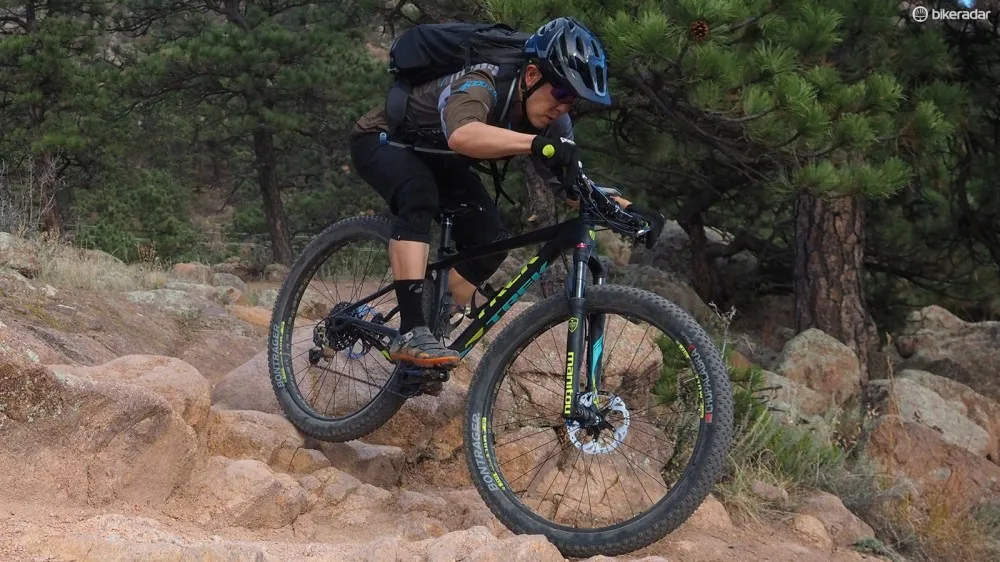
It might take a bit of extra effort to get the Stache 9 going but once it does, it's an absolute beast on rocks and roots
Trek has unfortunately also squandered away some of the inherent traction advantages of the 29+ format with the Stache 9’s tyre choice. The Bontrager Chupacabras’ low-profile tread design produces impressively low rolling resistance, and both bites exceptionally hard and drifts predictably on softer surfaces. Those similarly low-profile cornering knobs can’t dig into hardpack as effectively, however, and without the benefit of rear suspension or a slightly squared-off profile to lean on, the back end is prone to stepping out suddenly.
“The lack of a proper shoulder was my biggest issue with the Chupacabra,” said Marvin. “I rode some fast grassy trails and it took virtually nothing for the rear especially to step out of line. That made it fun on fast swoopy trails where you could kick it out to look like a boss, but not so good in loose stuff.”
Bontrager supposedly has some more aggressive 29+ tyre designs pending and they can’t come soon enough.
Fantastic frame, great kit
It’s taken Trek quite a bit of work to wrap the Stache 9’s alloy frame so tightly around those gargantuan wheels and tires. The seat tube closely follows the arc of the 3in Chupacabra casing, for example, and there’s a wafer-thin single-sided forging that just barely lets the non-driveside chainstay squeeze in between the tyre tread and crankarm.

Between the elevated chainstay and clutch-equipped rear derailleur, chain slap is kept at a minimum
Trek gained a few more millimetres by using the new wide-format Boost 148 rear hub and drivetrain spacing and even though the PF92 bottom bracket shell provides more real estate to spread things apart relative to a PF30 or conventional threaded shell, the driveside chainstay still has to be elevated to make room for the drivetrain.
There are dedicated forgings and intricately hydroformed shapes nearly everywhere you look, too, such as that non-driveside chainstay section, the neat sliding thru-axle rear dropouts (which also allow for singlespeed setups if you’re so inclined), and the way the top tube and seat tube flow into the adjoining stays. Meanwhile, the stubby tapered head tube allows for a reasonably low grip height. Cable routing is a mix of internal and external and it’s quite well done.
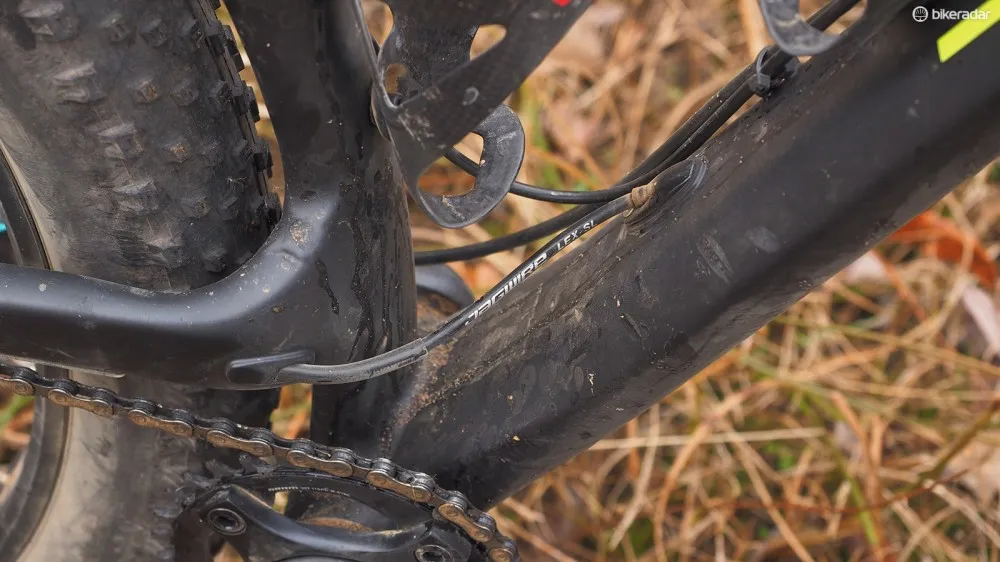
Frame designer Ted Alsop credits modern hydroforming techniques as the key to making elevated chainstays work long-term
According to Ted Alsop, the Trek engineer who designed the Stache, a large frame with all associated hardware weighs 2,025g (4.46lb).
That rather neat frame is dressed up in a solid mix of kit, too. Trek house brand Bontrager naturally supplies the Rhythm Pro carbon low-rise bar, forged alloy stem, lock-on grips, and lightweight Evoke RXL saddle but aside from that it’s all SRAM, Shimano, and other big names.
The SRAM X1 drivetrain delivers the same shifting performance and usefully wide range of the top-shelf XX1 package but at a far more attainable price while Shimano’s Deore XT hydraulic disc brakes – with bigger 180mm-diameter rotors all around – are as strong and reliable as ever.
Perhaps the most pleasant surprise, as alluded to above, is the Manitou Magnum fork. It’s amply stiff with its 34mm-diameter upper legs and stout cast magnesium lowers but it’s the performance of the internals that’s most impressive.
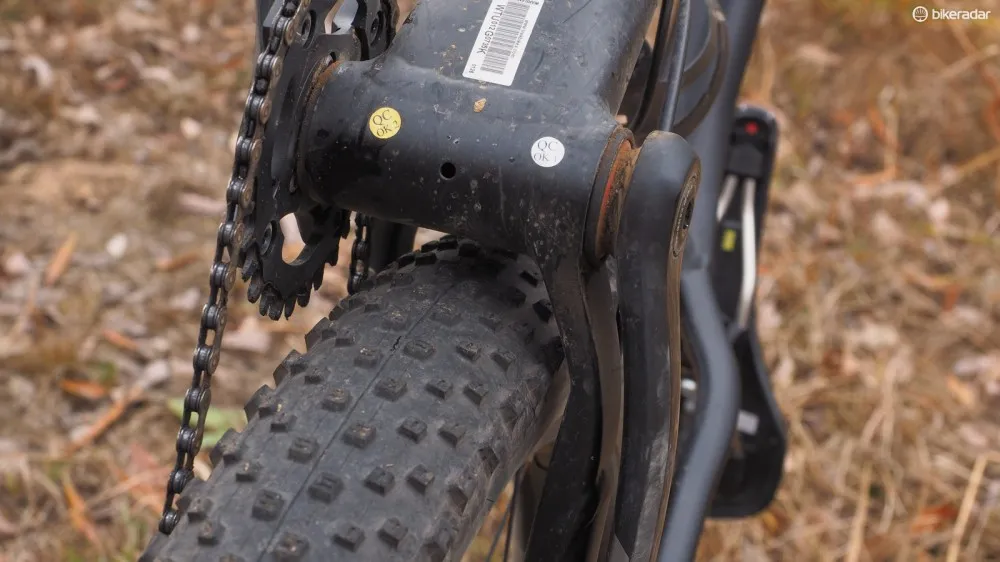
The bottom bracket shell and non-driveside chainstay stub are made from a single forging
Manitou says it designed the Magnum specifically from the outset for plus-sized tyres and that’s certainly a believable claim after six months of testing. It’s extremely supple off the top – largely canceling out the bounciness of the big tire casing – and highly controlled through the modest 110mm stroke. The spring rate also ramps up nicely as it approaches the bottom-out point and there are heaps of adjustments to fine-tune things to your liking, too – including air chamber volume if you’d prefer more spring rate progression. All in all, it’s a great little (big?) fork.
Out back is a DT Swiss 350 rear hub and it’d normally be tough to complain about finding such a bulletproof and proven unit on the spec sheet. However, Trek has neglected to request DT Swiss’s finer-toothed ratchet rings, leaving an utterly lethargic engagement speed in its ugly wake. It’s fine when you’re pedalling along but potentially crippling when the trail gets technical.
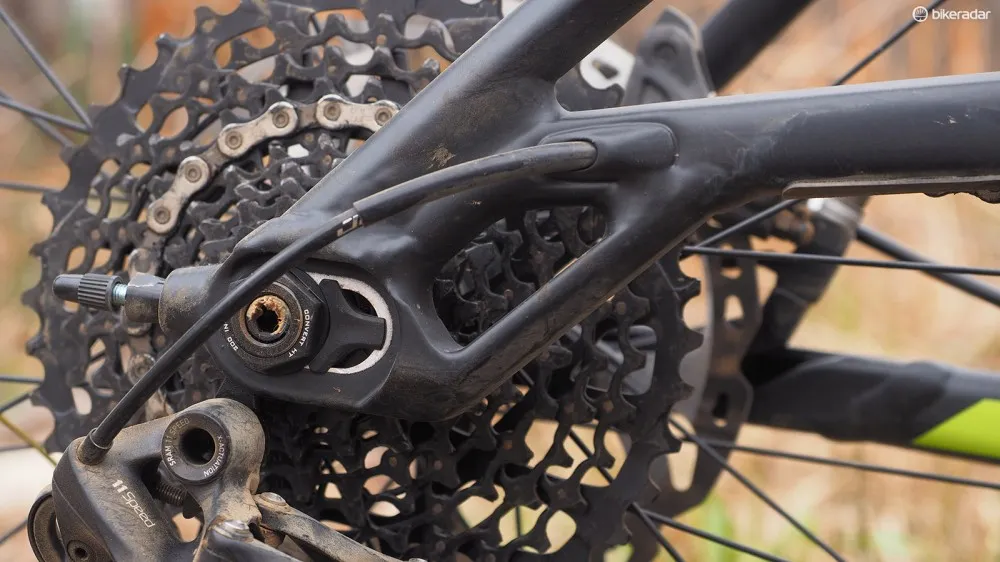
The adjustable dropouts allow for singlespeed running, too
Likewise, the KS Lev Integra dropper seatpost is a fantastic value-added inclusion – one might even argue that a dropper is more important to all-around trail fun than rear suspension – but once again, this one was problematic. Dropping the post went just fine but it regularly got stuck in the compressed position, only popping back up if you kept the lever depressed and bounced on the saddle. Not good.
That Evoke RXL saddle also has rather hard rear edges but aside from that, it’s a comfy and supportive place to spend your day.
Wicked fun but also conditions-dependent
How much you like the Stache 9 will likely depend a lot on the nature of your local trails. If you regularly find yourself on tacky dirt rollercoasters with endless high-speed ups and downs – not unlike the terrain in Trek’s Midwestern US headquarters, coincidentally – then the Stache 9 is almost guaranteed to get you grinning from ear to ear. In those situations, the rotating weight won’t matter much (and in fact, might even help) but the killer traction and manoeuvrability will be huge bonuses.
Riders constantly faced with lots of climbing, however, will invariably have a tougher time keeping those portly wheels and tyres turning over.
Either way, the Stache is still a fun machine and Trek deserves major kudos for delving so far off the straight-and-narrow to bring this to market. It’s not a question of whether the bike is fun to ride; it’s really just a question of how much fun you’ll have. In some ways, you can think of the Stache 9 like pizza (albeit a rather pricey one). When it’s good, it’s really, really good – but even when it’s bad, it’s still pretty good.
For more information, visit www.trekbikes.com.
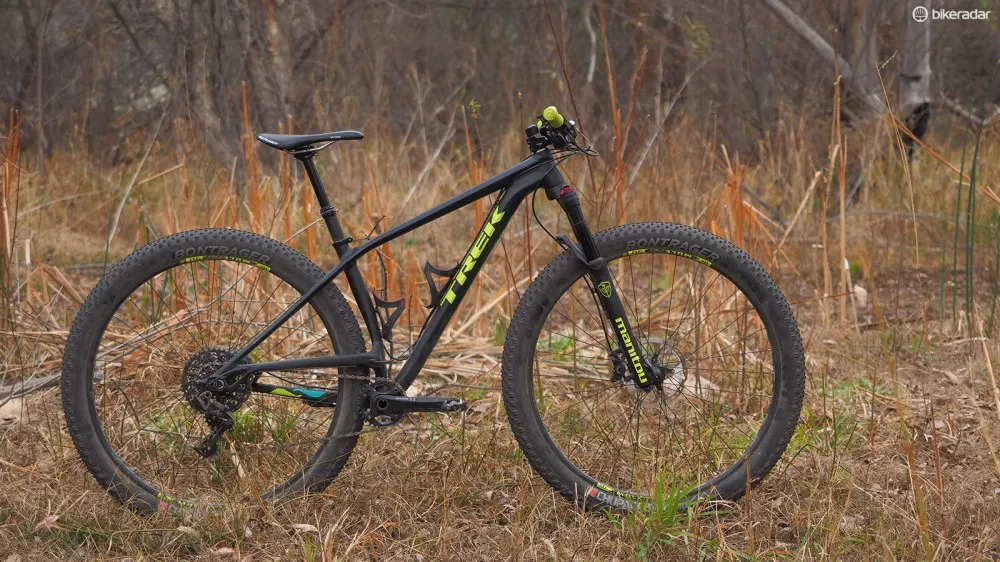
Complete specification:
- Frame: Trek Alpha Platinum Aluminum
- Fork: Manitou Magnum 34 Pro, 110mm travel
- Headset: FSA IS-2, 1 1/8-to-1 1/2in tapered
- Stem: Bontrager Rhythm Pro
- Handlebar: Bontrager Rhythm Pro
- Grips: Bontrager Race Lite lock-on
- Front brake: Shimano Deore XT BR-M785 w/ 180mm RT81-M rotor
- Rear brake: Shimano Deore XT BR-M785 w/ 180mm RT81-M rotor
- Brake levers: Shimano Deore XT BL-M785
- Rear derailleur: SRAM X1
- Shift lever: SRAM X1 trigger
- Cassette: SRAM XG-1175, 10-42T
- Chain: SRAM PC-1130
- Crankset: SRAM X1 1400 w/ 30T X-Sync chainring
- Bottom bracket: SRAM PF92
- Rims: Sun-Ringlé Mulefüt 50SL, 32-hole
- Hubs: DT Swiss 350 Centerlock w/ Boost spacing
- Front tyre: Bontrager Chupacabra, 29x3.0in
- Rear tyre: Bontrager Chupacabra, 29x3.0in
- Saddle: Bontrager Evoke RXL
- Seatpost: KS LEV Integra
- Pedals: n/a
- Weight: 12.26kg (27.03lb, 17.5in size, tubeless, without pedals)
